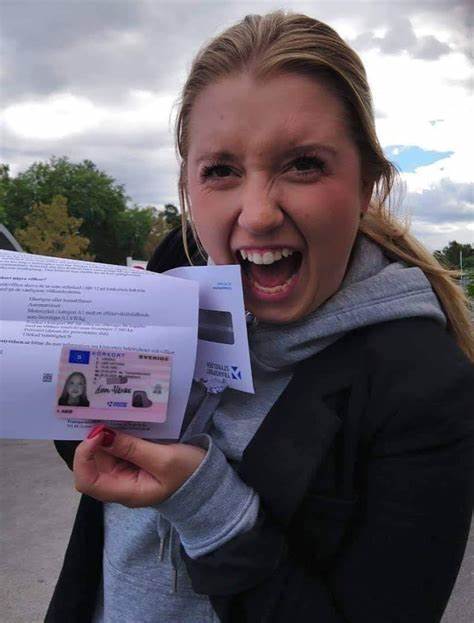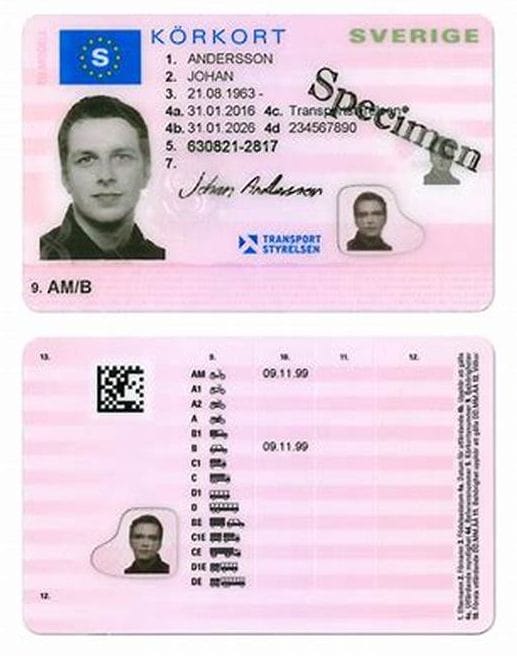20 Tips To Help You Be More Efficient With Buy Taxi License Driving Li…
페이지 정보

본문

Navigating the World Without a Driver's License: Exploring Alternatives and Implications
In today's world, where movement is a cornerstone of day-to-day life, the concept of living without a driver's license may seem overwhelming. Nevertheless, for some people, the decision to give up a driver's license is a conscious choice driven by various aspects, including environmental issues, cost, and individual choice. This article explores the alternatives to driving and the implications of living without a driver's license, supplying an extensive guide for those considering this way of life.
Comprehending the Decision
Picking not to have a driver's license is a personal choice that can stem from a number of factors. For some, it's a commitment to decreasing their carbon footprint and promoting sustainable living. Others find the cost of owning and preserving an automobile prohibitive, while some just choose the convenience and liberty of other modes of transport. Regardless of the motivation, living without a driver's license requires mindful preparation and a willingness to adjust.
Alternatives to Driving
Mass transit
- Buses and Trains: Public transport systems, such as buses and trains, are frequently the most reliable and cost-efficient alternatives. They are available in a lot of metropolitan locations and offer a structured way to navigate cities and rural regions.
- Train and Light Rail: In bigger cities, subways and light rail systems use quick and effective travel, often bypassing heavy traffic and minimizing travel time.
Ride-Sharing Services
- Uber and Lyft: These popular ride-sharing apps provide on-demand transport, making it easy to navigate without a car. They are especially helpful for late-night travel and in areas with limited public transport.
- Carpooling: Joining or forming carpool groups can lower costs and environmental impact. Numerous community platforms and apps assist in carpooling for routine commutes.
Bicycles and E-Scooters
- Bikes: Cycling is a healthy and environmentally friendly method to travel, specifically for shorter distances. Numerous cities have actually dedicated bike lanes and bike-sharing programs to encourage this mode of transport.
- Electric Scooters: E-scooters are a fashionable and convenient alternative for fast, brief journeys. They are frequently available through rental services in metropolitan locations and can be a fun option to standard modes of transportation.
Strolling and Jogging
- Walking: For those living in walkable communities, strolling is an easy and reliable method to remain active and get around. It's complimentary, needs no special devices, and benefits the environment.
- Jogging: Similar to walking, jogging can be a healthy and inexpensive method to travel, especially for brief ranges.
Electric and Hybrid Vehicles
- Electric Scooters and Bikes: For those who still want the convenience of a personal lorry but are worried about the environment, electric scooters and bikes are a viable option. They are low-maintenance and produce less emissions.
- Hybrid Cars: If the decision to avoid a driver's license is mostly due to environmental concerns, but the need for a car is inevitable, hybrid cars use a happy medium. They integrate standard fuel engines with electric motors to minimize fuel intake and emissions.
Telecommuting and Remote Work
- Work from Home: Many companies now use remote work alternatives, allowing staff members to work from home or other places. This can substantially minimize the need for everyday commuting and the associated costs.
- Virtual Meetings: Technology has actually made it possible to carry out business conferences and other interactions practically, additional lowering the requirement for travel.
Implications of Living Without a Driver's License
Financial Savings
- Minimized Vehicle Costs: Not having a car indicates preventing expenses such as car payments, insurance coverage, upkeep, and fuel.
- Mass Transit Costs: While public transport does have expenses, they are generally lower than those associated with owning a car.
Environmental Impact
- Lower Carbon Emissions: By avoiding making use of individual cars, individuals can considerably reduce their carbon footprint, adding to a more sustainable environment.
- Lowered Traffic Congestion: Fewer cars and trucks on the roadway can lead to decreased traffic blockage, making travel more efficient for everybody.
Health Benefits
- Increased Physical Activity: Using options like walking, jogging, and cycling can improve physical health and psychological wellness.
- Reduced Stress: Avoiding the everyday troubles of driving, such as traffic and parking, can cause a more unwinded and hassle-free way of life.
Social and Community Engagement
- Community Connections: Relying on public transport or ride-sharing services can foster a sense of community and social interaction.
- Assistance for Local Businesses: Walking or cycling to regional organizations can assist support the regional economy and lower reliance on large, ecologically unfriendly corporations.
Legal and Practical Considerations
- Recognition Issues: In many countries, a driver's license works as a main form of recognition. People without a license might need to carry alternative kinds of ID, such as a passport or state-issued ID card.
- Travel Restrictions: Without a driver's license, travel to remote locations or locations with limited public transportation can be tough. Planning ahead and KöPa Taxilicens KöRkort utilizing alternative transportation approaches is crucial.
Frequently asked questions
Q: How can I get around if I live in a backwoods without a driver's license?
- A: In rural locations, options like ride-sharing services, carpooling, and public transport might be limited. Consider joining community groups or online platforms to discover regional carpooling alternatives. Electric scooters and bikes can also be helpful for shorter ranges. Additionally, lots of backwoods have neighborhood transport services that can be accessed for important journeys.
Q: Can I still take a trip internationally without a driver's license?
- A: Absolutely. A driver's license is not needed for the majority of international travel. However, you might require a passport or other types of identification. For countries where driving is essential, you can lease a car with a valid driver's license or usage regional transport services.
Q: What are the very best apps for finding ride-sharing and carpooling alternatives?
- A: Popular apps for ride-sharing consist of Uber, Lyft, and Bolt. For carpooling, Waze Carpool, Ridester, and Scoop are extremely recommended. These apps typically provide real-time details on available rides and assist connect you with drivers heading in the same instructions.
Q: How do I handle without a driver's license if it is required for many types of identification?
- A: In numerous places, a state-issued ID card or a passport can act as a primary form of identification. It's also an excellent idea to bring multiple kinds of ID, such as a credit card or a voter registration card, to ensure you are gotten ready for various scenarios.
Q: Are there any health risks related to using public transport?
- A: While public transport can expose people to a higher danger of transmittable diseases, especially in congested conditions, the benefits often exceed the dangers. Practicing great health, such as cleaning hands frequently and wearing a mask, can assist mitigate these dangers. In addition, numerous public transport systems have executed precaution to safeguard travelers.
Q: What are the environmental benefits of not driving a car?

- A: Not driving a car can substantially lower your carbon footprint. Cars are a major source of greenhouse gas emissions, and by deciding for public transport, biking, or walking, you can add to a healthier environment. This also assists minimize air pollution and traffic blockage, enhancing general lifestyle.
Living without a driver's license is a possible and typically useful choice for numerous people. By exploring and utilizing alternative modes of transportation, one can conserve cash, decrease their ecological impact, and enhance their health and well-being. While there are obstacles, such as browsing identification and travel concerns, the benefits often make the effort rewarding. Whether driven by individual worths or practical factors to consider, the choice to give up a driver's license can cause a more sustainable and satisfying lifestyle.
Extra Resources
- Public Transportation Apps: Transit, Moovit, Citymapper
- Cycling and Walking Apps: Strava, MapMyRide, Google Maps
- Neighborhood Carpooling Platforms: Waze Carpool, Ridester, Scoop
- Remote Work and Telecommuting Tools: Zoom, Microsoft Teams, Slack
By welcoming these options, individuals can produce a lifestyle that aligns with their worths and needs, adding to a more sustainable and linked world.
- 이전글The 12 Most Unpleasant Types Of Counterfeit German Banknotes Tweets You Follow 25.07.04
- 다음글The History Of Headphones In UK In 10 Milestones 25.07.04
댓글목록
등록된 댓글이 없습니다.

